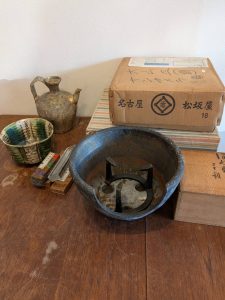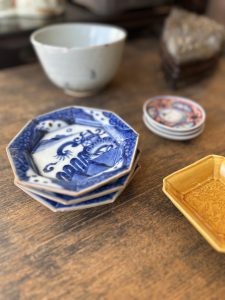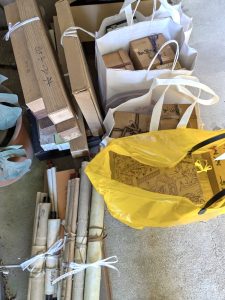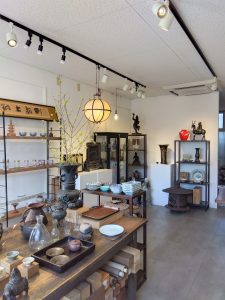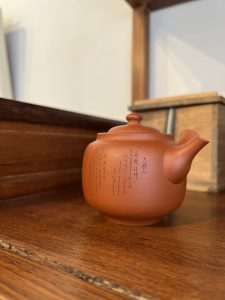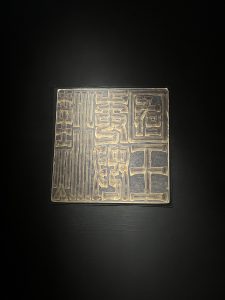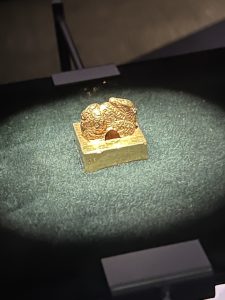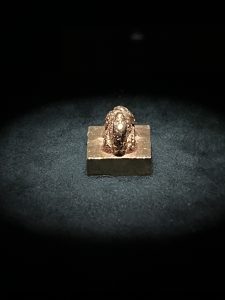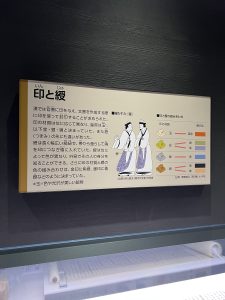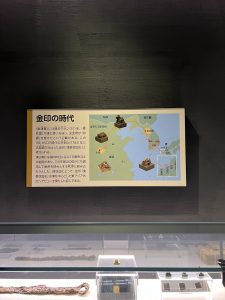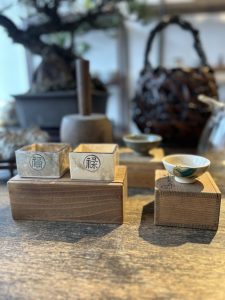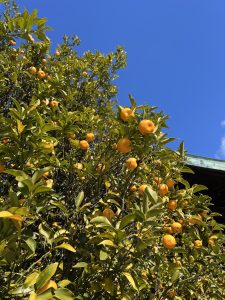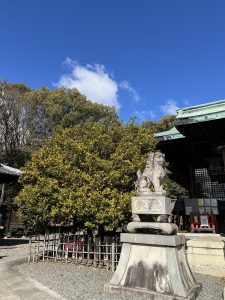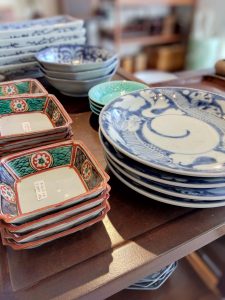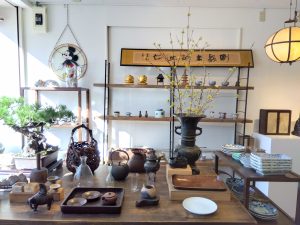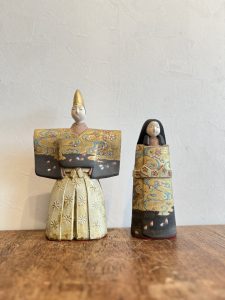
先日、予告通り我が家のお雛様を出したのですが、三人官女の配置と先日の桃と橘の配置がわからないという失態が毎年毎年恒例となっております。今年もお約束のごとくやらかしておりましたが、なんとか飾ることが出来ました。
我が家のお雛様はそう古くはないのですが、最近たまたまデパートでお雛様をみることがあったのですが、昨今の住宅事情のせいでしょうか、かつてよりコンパクトなものが多いなぁ、と思いました。ここ数十年でもこんなに様子が違っているのですから、雛飾り、これまでも時代や地域ですぐに変化しているのでしょうか。
そもそも平安時代からお雛様は、平安時代、上流階級の女子の間で「ひいな遊び」というスタイルが発端のようで。紙で作った人形と家財道具に似せて作ったおもちゃを使った“ままごと遊び”が盛んに行われていたようです。当時の随筆や物語にもそのような場面が登場したりしているようですが、室町時代ころになると3月3日に祭りの日が定まってきたようです。
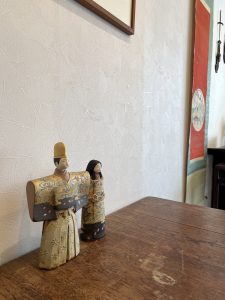
江戸時代になると、宮中行事として雛祭りが取り入れられるようになり、幕府の大奥でも取り入れられます。一方、このころになると庶民にも雛祭りが広まり、女の子の初節句を人形を飾ってお祝いする形が生まれました。江戸時代初期は内裏雛一対だったものが、江戸中期には段飾りが登場し、三人官女をはじめとした雛人形や雛道具の数が増えていき、絢爛豪華さを競っていた時代でありました。ここで現代の雛飾りのスタイルに近寄って気がします。
そして、そのスタイルが明治以降になると雛祭りは農村部まで広くいきわたることとなり、大きく普及し現在にいたっているようであります。
そんな当時の雛飾りをこの時期全国各地で見ることが出来ますが、ここ愛知県や名古屋市近辺でも沢山の雛祭りイベントが開催されております。少しご紹介いたしましょう。
【名古屋市】徳川美術館 特別展「尾張徳川家の雛まつり2025」
開催期間:2025年2月1日(土)~4月2日(水)
開催場所:徳川美術館
【瀬戸市】第24回 陶のまち瀬戸のお雛めぐり
開催期間:2025年2月1日(土)~3月9日(日)
開催場所:瀬戸蔵周辺一帯
第13回 犬山城下町おひなさまめぐり【犬山市】
開催期間:2025年2月10日(月)~3月10日(月)
開催場所:旧磯部家住宅
【大口町】大口町歴史民俗資料館 冬の企画展「ひなまつり」
開催期間:2025年1月25日(土)~3月9日(日)
開催場所:大口町歴史民俗資料館(大口町健康文化センター ほほえみプラザ3階)
【知多市】知多市歴史民俗博物館 収蔵品展「桃の節句 ひなまつり展」
開催期間:2025年1月18日(土)~3月9日(日)
開催場所:知多市歴史民俗博物館
【岡崎市】旧本多忠次邸のひなまつり
開催期間:2025年2月4日(火)~3月9日(日)
開催場所:旧本多忠次邸
【豊田市】中馬のおひなさん in 足助
開催期間:2025年2月8日(土)~3月9日(日)
開催場所:足助重伝建の町並み一帯と香嵐渓
【田原市】田原市博物館(渥美郷土資料館) 企画展「ひな祭り展」
開催期間:2025年2月1日(土)~3月16日(日)
開催場所:田原市博物館 渥美郷土資料館
一部しかご紹介できませんでしたが、イベント結構多いですね。
また、昨今でも変化しているとわかる雛飾りなのに、これまでも時代や地域ごとに変化しているようですが、その変化の対応とスピード感の中に「雛飾りを楽しもう」がどの時代にも必ず潜んでいるのはたしかなようでして。なぜなら、昨日も奮闘しながらも楽しみながら雛飾り、飾ってましたから笑。
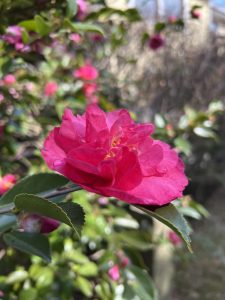
それではごきげんよう(スタッフY)
The other day, we took out our Hina dolls as announced, but as has become a tradition every year, we made the mistake of not knowing the placement of the three courtesans and the peach and tachibana from the other day. This year, as promised, we made the same mistake again, but we managed to put them up.
Our Hina-san dolls are not so old, but recently I happened to see them at a department store, and I thought that many of them are more compact than before, probably due to the recent housing situation. I wondered if hina decorations have been changing quickly in different times and regions, since they have been so different even in the last few decades.
To begin with, it seems that Ohinasama originated from a style of “Hiina-play” among upper class girls during the Heian period (794-1185). It seems that “playing with dolls” using paper dolls and toys made to resemble household goods was a popular activity. Such scenes appear in essays and stories of the time, and by the Muromachi period (1333-1573), the date of the festival seems to have been fixed at March 3.
In the Edo period (1603-1867), Hinamatsuri became a court event, and was also introduced in the inner chambers of the shogunate. Meanwhile, Hinamatsuri spread to the common people around this time, and a form of celebrating a girl’s first Doll’s Festival by displaying dolls was born. In the early Edo period, there was only one pair of Uchiuri-hina, but by the mid-Edo period, tiered decorations appeared, and the number of dolls and doll implements, including the three courtesans, increased, creating a time when people competed with each other in splendor and splendor. I feel that we are getting closer to the modern style of Hina decorations here.
And after the Meiji period (1868-1912), this style of Hina Matsuri spread widely to rural areas, and it seems to have spread widely to the present day.
You can see such Hina decorations in many places in Japan this time of year, and there are many Hina Festival events held here in Aichi Prefecture and Nagoya City. Here are some of them.
Tokugawa Art Museum Special Exhibition “Owari Tokugawa Family Hina Festival 2025
Period: February 1 (Sat) – April 2 (Wed), 2025
Venue:Tokugawa Art Museum
Seto City] The 24th Hina Festival in Seto, the City of Pottery
Period:February 1, 2025 (Sat) ~ March 9, 2025 (Sun)
Place of the event:Around the Seto warehouse area
The 13th Inuyama Castle Town Ohinasama Tour [Inuyama City
Period: February 10 (Mon) – March 10 (Mon), 2025
Place: Former Isobe Family Residence
Oguchi Town] Oguchi Town Museum of History and Folklore Winter Exhibition “Hinamatsuri (Doll Festival)
Period:January 25, 2025 (Sat) ~ March 9, 2025 (Sun)
Place: Oguchi-cho History and Folklore Museum (3F Hohoemi Plaza, Oguchi-cho Health Culture Center)
Chita City Museum of History and Folklore Collection “Peach Festival Hinamatsuri Exhibition
Period:January 18, 2025 (Sat) ~ March 9, 2025 (Sun)
Place of Exhibition:Chita City Museum of History and Folklore
Okazaki City】Hina Matsuri at the Former Residence of Tadatsugu Honda
Holding period:February 4 (Tue) – March 9 (Sun), 2025
Place of the festival:Former Tadatsugu Honda Residence
Toyota City】Chuma no Ohinasan in Asuke
Period:February 8, 2025 (Sat) ~ March 9, 2025 (Sun)
Venue:Asuke Jyudenken-no-machinami area and Korankei Gorge
Tahara City】Tahara City Museum (Atsumi Local History Museum) Special Exhibition “Hinamatsuri Exhibition
Holding period:February 1 (Sat) to March 16 (Sun), 2025
Place of the exhibition:Atsumi Local History Museum, Tahara City Museum
I could only introduce some of them, but there are quite a lot of events.
Even nowadays, we can see that hina decorations are changing, and it seems that they have been changing from era to era and region to region, but in the response and speed of the changes, “Let’s enjoy hina decorations” is always hidden in every era. Because I was enjoying decorating hina-dolls while struggling to keep up with the changes, lol.
Have a good day (Staff Y)
*****************
ご実家の整理やお片付けなどをされている方のご相談などが多くございます。
お片付けなどくれぐれもご無理のないようになさってくださいませ。
風光舎では古美術品や骨董品の他にも絵画や宝石、趣味のお品など様々なジャンルのものを買受しております。
お片付けをされていて、こういうものでもいいのかしらと迷われているものでも、どうぞお気軽にご相談下さいませ。
また風光舎は、出張買取も強化しております。ご近所はもちろん、愛知県内、岐阜県、三重県その他の県へも出張いたします。
まずは、お電話お待ちしております。
愛知県名古屋市千種区姫池通
骨董 買取【古美術 風光舎 名古屋店】
TEL052(734)8444
10:00-18:00 OPEN
#出張買取#骨董#古美術#骨董品#絵画#版画#茶道具#刀剣#彫刻
